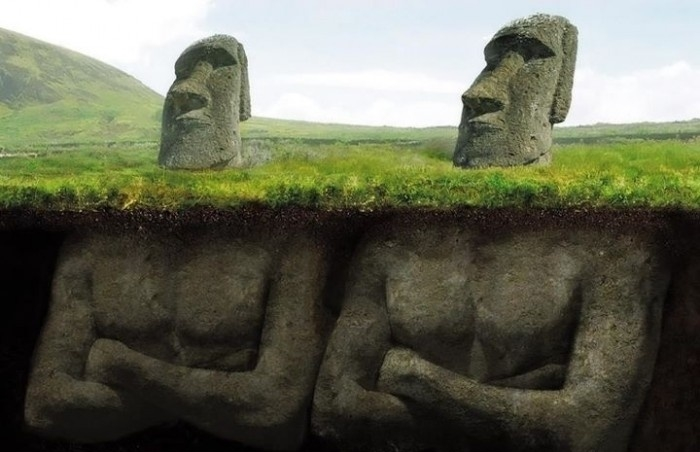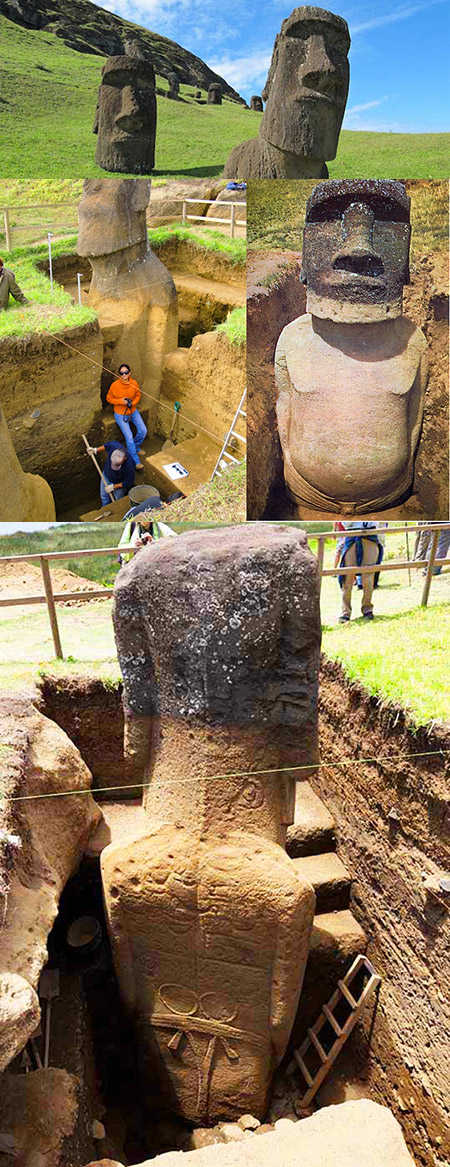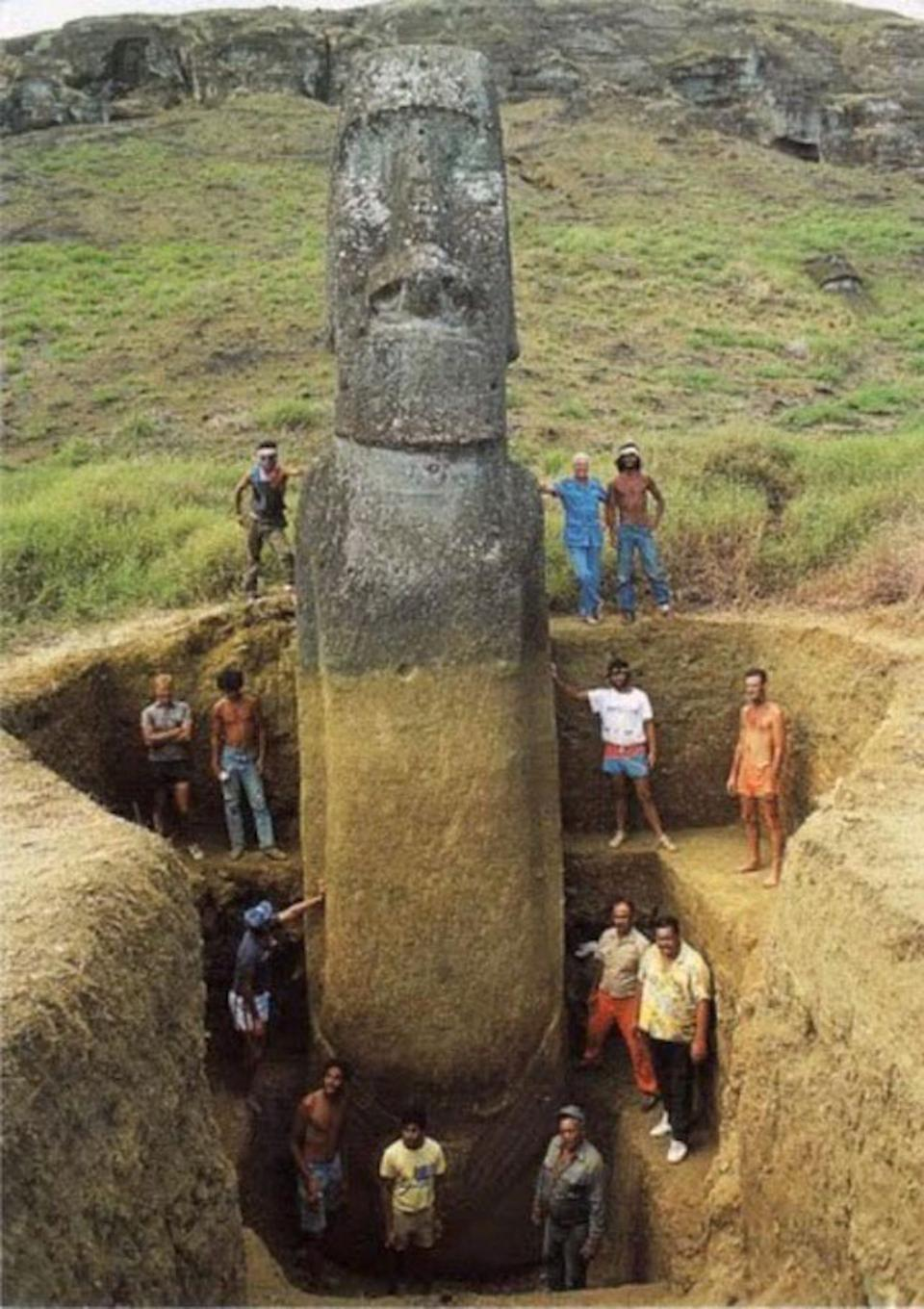The Moai statues of Easter Island, also known as Rapa Nui, stand as monumental testaments to a bygone civilization. These enigmatic figures, with their oversized heads emerging from the earth, have long captivated the imaginations of archaeologists, historians, and visitors alike. Much like time machines, the Moai statues preserve the secrets and stories of a society that has vanished into history, leaving behind these stone sentinels as their only legacy.

The Moai statues, nearly 1,000 in total, were carved by the early inhabitants of Rapa Nui between 1400 and 1650 AD. Each statue, known locally as “Moai,” represents an ancestral figure, believed to embody the spiritual and political power of the island’s early clans. These statues, made from volcanic tuff, are scattered across the island, standing on stone platforms called “ahu.” The most striking feature of the Moai is their oversized heads, which are disproportionately large compared to their bodies, accounting for nearly one-third of the statue’s total height.
The creation of the Moai statues was a colossal undertaking, requiring significant human effort, resources, and ingenuity. The Rapa Nui people used only stone tools to carve these statues from the volcanic rock of the Rano Raraku quarry. Once carved, the statues were transported across the island to their final locations. The methods of transportation remain a topic of debate among researchers, with theories suggesting the use of wooden sledges, rolling logs, or even a unique walking technique facilitated by ropes.
Each Moai is unique, featuring distinct facial features, headgear, and body proportions, which suggests that they were designed to represent specific individuals. These statues served as both spiritual and political symbols, reflecting the hierarchical nature of Rapa Nui society. The Moai were believed to hold the “mana” or spiritual essence of the ancestors, ensuring the protection and prosperity of the community.

While the heads of the Moai statues are the most visible and iconic, many of these statues also have intricately carved bodies that extend below the ground. Excavations have revealed that some statues are full-length figures, complete with arms, torsos, and detailed carvings on their backs. These carvings often depict ceremonial designs, symbols, and even depictions of the Rapa Nui cosmology. The discovery of these buried bodies has added a new layer of complexity to the understanding of the Moai, suggesting that their placement and burial were deliberate, perhaps serving both practical and symbolic purposes.
Numerous theories have been proposed to explain the purpose and significance of the Moai statues. One prevalent theory suggests that the statues were erected as territorial markers, with each clan constructing Moai to assert their dominance and control over specific areas of the island. Another theory posits that the Moai were part of a complex religious and ceremonial system, designed to connect the living community with the spirits of their ancestors. The statues, imbued with mana, were believed to channel spiritual power, ensuring the fertility of the land and the well-being of the people.

The process of transporting and erecting the Moai also remains a subject of fascination and speculation. Some researchers believe that the statues were moved using a combination of wooden sledges and log rollers, while others argue that the statues were “walked” to their destinations by rocking them back and forth with ropes. This latter theory has gained traction in recent years, supported by experimental archaeology that demonstrates the feasibility of moving large statues in this manner.
Despite the many questions that remain, the Moai statues stand as enduring symbols of the ingenuity, resilience, and spiritual depth of the Rapa Nui people. They are a testament to the islanders’ ability to create monumental works of art with limited resources and to organize large-scale communal efforts. The statues continue to captivate the imaginations of those who visit Easter Island, drawing people from around the world to witness these silent guardians of history.

Today, Easter Island and its Moai statues face numerous challenges, including environmental threats, erosion, and the impacts of tourism. Conservation efforts are underway to preserve these invaluable cultural treasures. The Rapa Nui National Park, a UNESCO World Heritage site, plays a crucial role in protecting the island’s archaeological sites and promoting sustainable tourism. Additionally, ongoing research and excavations continue to uncover new insights into the history and significance of the Moai, enriching our understanding of this ancient civilization.
The Moai statues of Easter Island are more than just historical artifacts; they are profound symbols of a civilization that has left an indelible mark on history. Through careful preservation and continued research, we can ensure that the secrets of the Moai remain an enduring source of fascination and inspiration. These statues, standing as timeless sentinels, remind us of the ingenuity and resilience of the Rapa Nui people and their ability to create lasting legacies from stone. As we delve deeper into the mysteries of the Moai, we honor the legacy of the Rapa Nui civilization and keep their history alive for future generations.

